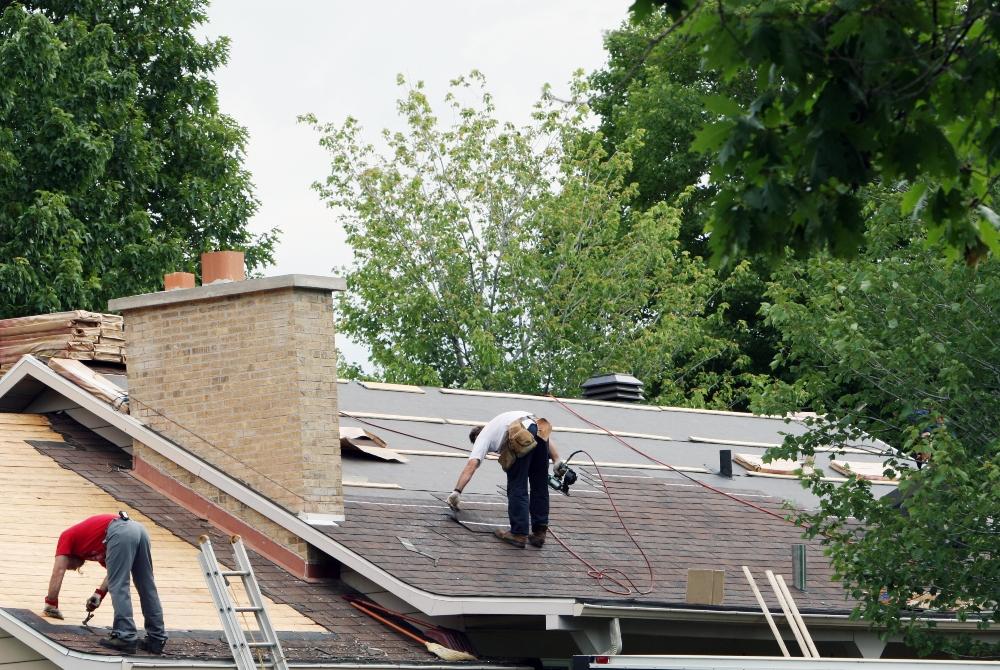
As we transition into spring and begin seasonal home exterior maintenance, you may be wondering if it’s time for roofing upgrade. But is it necessary, or do you just need minor repairs? How long would a replacement even take? To help with the decision, we’ve outlined five key roof replacement FAQs. Read on to learn more.
Q: How long does a roof last before needing replacement?
A roof typically lasts up to about 30 years. However, multiple factors impact the exact lifespan of a particular roof, including environmental conditions (extreme and fluctuating temperatures, severe weather, etc.), the type and quality of materials, and installation craftsmanship. The type of roofing material is the biggest component of expected lifespan, as each has its own durability:
- Asphalt shingle roofs typically last between 15 and 30 years, and they can include material warranty coverage up to as much as 25 years.
- Metal roofs can last between 40 and 70 years, depending on the design and type of metal, with warranties covering 20 years to a lifetime. In fact, premium metals like copper and zinc may hold strong for over 100 years.
- Wood/cedar shake and shingle roofs tend to last for about 30 years, with warranties also running up to 30 years. However, they require regular maintenance, including cleaning every year and repainting or staining every five.
- Clay tile roofs are weather, rot, and fire-resistant, making them exceptionally durable. They can last 50-100 years, with material warranties ranging from 30 years to lifetime coverage.
- Slate tile roofs require little maintenance and are extremely durable and resistant to extreme weather, giving them an exceptional life expectancy of 75-200 years. Manufacturer warranties range 50 years to a lifetime.
Q: What are the warning signs that I need a new roof?
As you can see, roofs aren’t indestructible and everlasting. So, the first sign you need a new roof is age. Once your roof reaches the age of the corresponding material as outlined above, schedule a free inspection with the expert contractors at Armor. Additional warning signs include:
- Bulging, curling, buckling, or otherwise damaged shingles
- Missing granules and/or fully detached shingles
- Bacteria/algae growth on shingles, including hazardous mold and mildew
- Interior water damage on ceilings and/or walls caused by leaks
Q: Should I repair or fully replace my roof?
Oftentimes, small leaks, storm damage, and other minor problems can be repaired without investing in an entire replacement—especially if the roof is relatively new. However, the answer to the “repair or replace” question changes on a case-by-case basis. That’s why Armor Construction offers free inspections to determine the best course of action, which include a no-obligation estimate as well.
Q: How long does it take to replace a roof?
The total time a roof replacement takes depends primarily on the size and scope. There are additional factors to consider, such as weather, to ensure safety and quality craftsmanship. However, generally speaking, Armor’s experienced roofing crews can replace the roof of an average-size home in a single day.
Q: Can a roof be replaced in the winter?
While a roof can be replaced during winter, complications due to weather conditions should be expected. The workers must take extra safety precautions due to snow, ice, and cold temps, which also impact the tools and materials used. Asphalt shingles, for example, require heat for proper sealing as the cold makes them more brittle and prone to damage.
After another long winter, you may be noticing roof leaks and other damage that have you wondering if you should repair or invest in a new roof. While these roof replacement FAQs can help with the decision process, scheduling a free, professional inspection is the best way to determine if it’s time for an upgrade.
Contact Armor Construction to learn more and for all your roofing, siding, gutter system, and storm damage repair needs.


